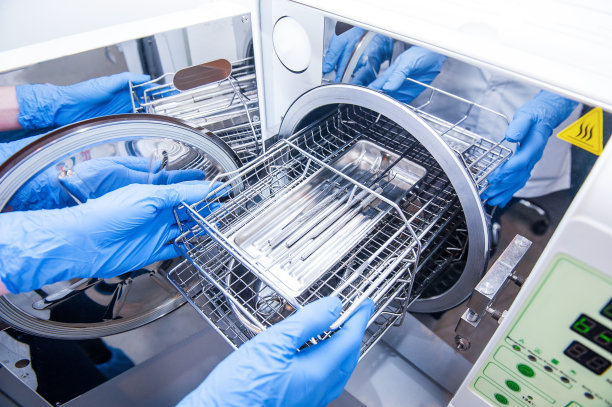Revolutionizing Smiles The Comprehensive Guide to Dental Implant Treatment for a Confident Tomorrow
Summary: Dental implant treatment represents a transformative journey for many seeking to regain confidence in their smiles. "Revolutionizing Smiles: The Comprehensive Guide to Dental Implant Treatment for a Confident Tomorrow" delves into the numerous benefits of dental implants, the procedure involved, maintaining oral hygiene post-treatment, and the psychological impact of restored smiles. Through this guide, we explore how dental implants not only enhance physical appearance but also enrich overall quality of life, fostering self-esteem and emotional well-being. With detailed insights, this guide aims to empower individuals considering dental implants to make informed decisions for a brighter, more confident tomorrow.
1. Understanding the Benefits of Dental Implants

Dental implants serve as a remarkable solution for individuals suffering from tooth loss, restoring both functionality and aesthetics. One of the primary benefits of dental implants is their durability. Unlike dentures, which can wear down over time, implants are designed to last for many years, often a lifetime with proper care. This longevity offers an appealing advantage for those seeking a reliable and long-term solution.
In addition to durability, dental implants provide a natural appearance that closely resembles real teeth. The implants are tailored to match the shape, size, and color of an individuals existing teeth, ensuring a seamless blend. This natural integration into the mouth enhances self-confidence, allowing individuals to smile freely without any fear of their dental work being noticeable.
Lastly, dental implants help maintain jawbone health. When a tooth is lost, the underlying bone may deteriorate due to lack of stimulation. Implants act as artificial tooth roots, promoting bone density and preventing further loss. This aspect makes implants not only a cosmetic improvement but also a vital component in preserving overall oral health.
2. The Dental Implant Procedure Explained
The dental implant procedure typically involves multiple stages, beginning with a comprehensive consultation. During this initial meeting, dentists evaluate the patients oral health, discussing options and formulating a personalized treatment plan. This assessment is crucial for determining the appropriate implant type, size, and placement technique required for the individual’s needs.
The next stage involves the surgical placement of the implant into the jawbone. This is often conducted under local anesthesia to minimize discomfort. Over a few months, the implant integrates with the jawbone in a process known as osseointegration. This biological bonding period is vital for ensuring the stability and durability of the implant, ultimately leading to a successful outcome.
Once osseointegration is complete, the final restoration occurs. This stage involves attaching a crown or prosthetic tooth onto the implant. The crown is custom-made to match the existing teeth, ensuring aesthetic harmony. Patients can expect frequent follow-ups during this stage to monitor healing and ensure the proper fit of the dental restoration.
3. Maintaining Oral Hygiene After Implants
Post-treatment care is crucial for the longevity of dental implants. It is essential for patients to maintain excellent oral hygiene to prevent any infections or complications. Regular brushing and flossing should become a part of their daily routine, focusing on the area around the implants as well. Using a soft-bristled toothbrush can help ensure that all parts of the mouth are gently cleaned without causing damage.
In addition to regular brushing, professional dental cleanings are essential. Patients should schedule routine check-ups with their dentist, ideally every six months. These visits enable the dentist to monitor the implants condition and professional cleaning to remove any tartar build-up that home care might miss.
Moreover, patients should be encouraged to avoid unhealthy habits like smoking and excessive alcohol consumption, as these can significantly hinder the healing process and the long-term success of dental implants. By following these guidelines, patients can greatly enhance the durability and performance of their implants.
4. The Psychological Impact of Dental Implants
The psychological benefits of receiving dental implants are profound. Many individuals report significant improvements in self-esteem and confidence after undergoing the procedure. With their restored smiles, patients find it easier to engage socially, participate in activities they once avoided, and express themselves more freely.
Studies have shown that dental implants can lead to reduced anxiety and increased overall quality of life. Individuals with missing teeth often feel self-conscious, reluctant to smile or laugh. However, the aesthetic improvements afforded by implants can dramatically shift one’s self-image, resulting in greater social interaction and improved relationships.
Furthermore, the restored functionality of dental implants allows individuals to enjoy their favorite foods without fear of discomfort or embarrassment. This freedom contributes to a more enjoyable, fulfilling life, mitigating feelings of frustration that often accompany dental issues. Overall, the impact of restored smiles extends far beyond physical aesthetics—positively influencing mental health and emotional well-being.
Summary:
In conclusion, "Revolutionizing Smiles: The Comprehensive Guide to Dental Implant Treatment for a Confident Tomorrow" encapsulates the multifaceted advantages of dental implants, ranging from restoring physical appearance to enhancing psychological well-being. Through understanding the benefits, the involved procedures, the importance of maintenance, and the psychological impacts, individuals are guided toward making informed decisions for their dental health.
Embracing dental implants paves the way for a brighter, more confident future, where individuals no longer hide their smiles but rather express joy and confidence.
This article is compiled by Vickong Dental and the content is for reference only



